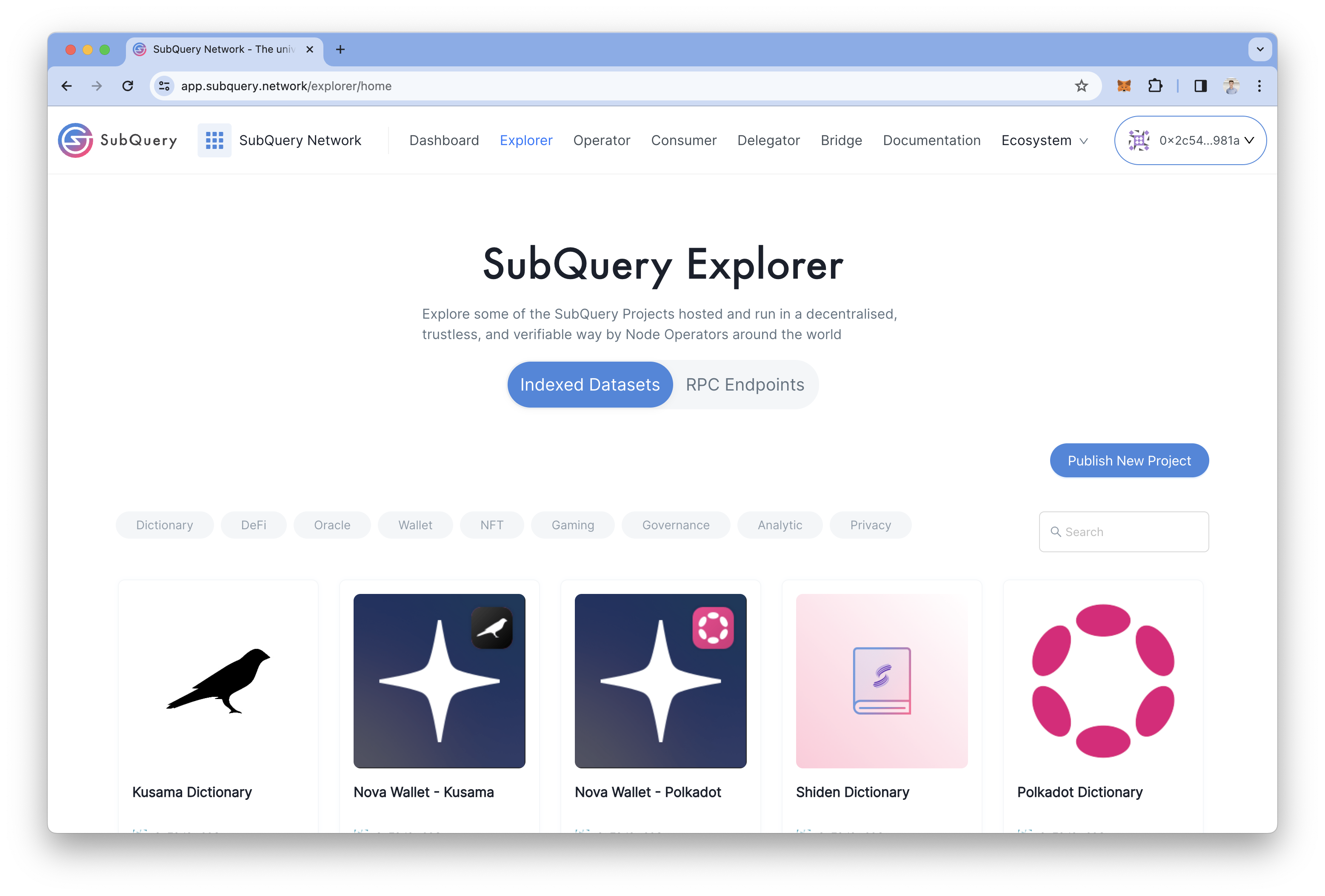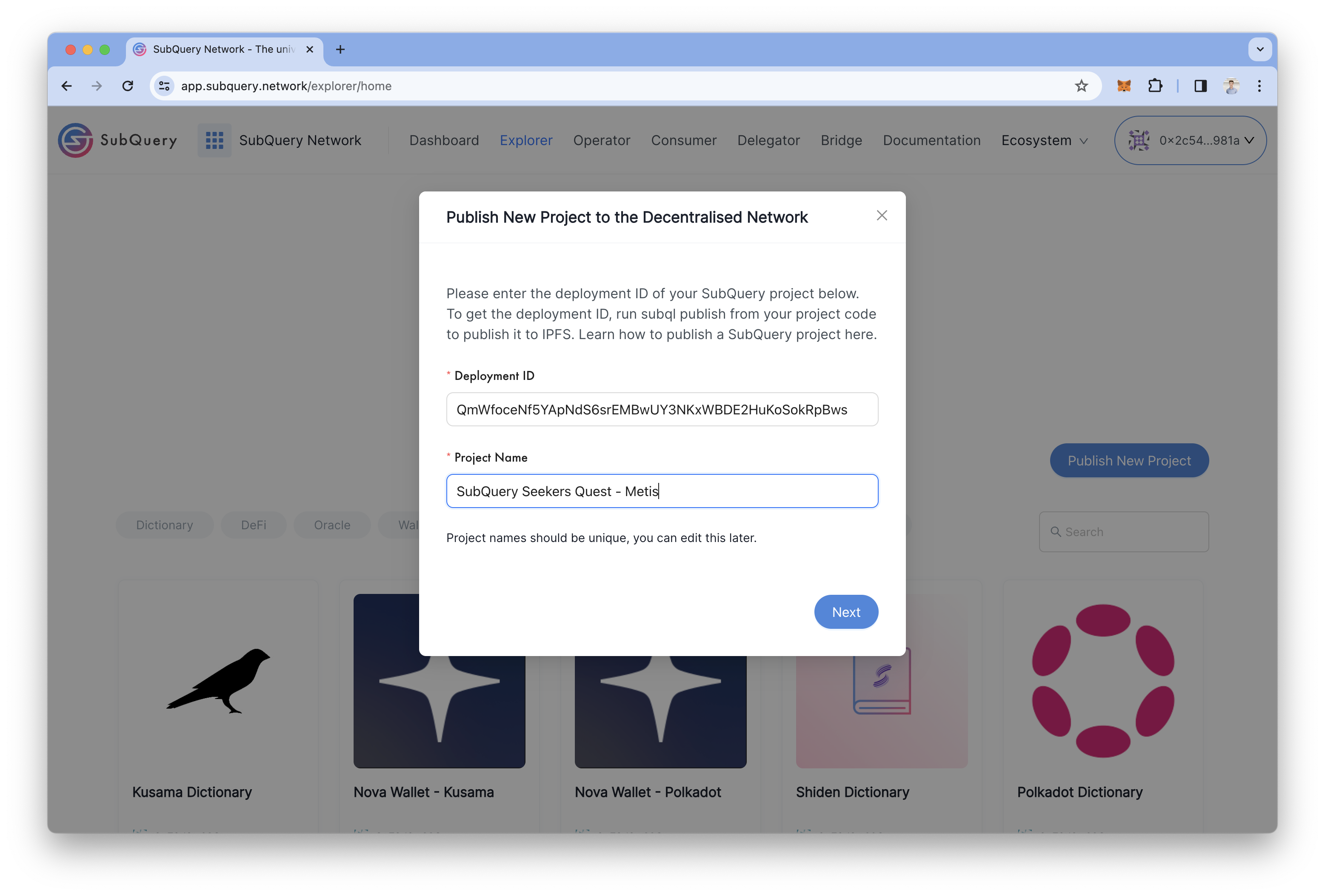Publishing your Project to the SubQuery Network
Publishing your Project to the SubQuery Network
We're building the most open, performant, reliable, and scalable data service for dApp developers. The SubQuery Network indexes and services data to the global community in an incentivised and verifiable way. After publishing your project to the SubQuery Network, anyone can index and host it - providing data to users around the world faster and reliably.
Why you should publish your project to SubQuery's Decentralised Network
The SubQuery Network is the future of web3 infrastructure, it allows you to completely decentralise your infrastructure stack. This provides the following benefits:
- Unstoppable infrastructure - With almost 100 decentralised and geographically isolated Indexers providing data to your dApps, sleep safe knowing your infra will never go down.
- Superior performance - Since Indexers are all around the world, they're closer to your users. Lower latency and faster requests creates a better user experience for your users.
- Infinitely scalable - As your user base grows, more indexers will serve you data allowing you to infinitely scale without interruption.
- Seamless transition - We're here to help you migrate, and we've made it easy to integrate in your dApps with our network client SDKs.
With the SubQuery Network, you can now go to your community and say with confidence "our dApp is truly decentralised".
Prerequisites for your project running on the Network
- The SubQuery Network does not support GraphQL subscriptions, so you can't enable the
--subscriptioncommand line argument - Your project can generate stable proof of indexing results. This means you should avoid:
- Random ordered DB operations, e.g. avoid using
Promise.all()in your mapping functions. - Introducing external data dependent on runtime, e.g. initialising a new current date using
new Date().
- Random ordered DB operations, e.g. avoid using
- Your project is published to IPFS, follow the guide here.
Deploying your Project
The SubQuery Network is a public permission-less network, anyone can deploy their project freely. To do so, head to the SubQuery Explorer and click "Publish New Project".

You will need to publish your project to IPFS first, follow the guide here. Please enter the project CID and give your project a nice name.

On the next page you are asked to enter a project description, and also populate information about the project that Consumers or Node Operators might find interesting. This includes:
- a logo or image
- categories that the project can be classified by
- a website address for the project
- a link to where the source code can be found
- for the deployment
- a version number, we recommend it follows semantic versioning rules
- the deployment description, which might include additional information for Node Operators about migration steps or breaking changes in this version
Once entered, click "Publish" to publish your project, you will then be taken to a page to manage your project.
How to encourage Node Operators to sync your project
Please read and review the suggested next steps after publishing your project to maximise success.
Managing Your Project
You can easily make changes to your project or deploy a new version by accessing the Managed Project page.

Firstly, you can publish a new version by clicking "Deploy New Version". This will let Node Operators know and allow them to upgrade to the new version of your Project. For the deployment you should provide:
- the deployment CID, you will need to publish your project to IPFS first, follow the guide here
- a version number, we recommend it follows semantic versioning rules
- check the box if you want to make this version recommended, this means that you are recommending Node Operators to immediately update to it. Don't check this if it's a test build or if it has major breaking changes
- the deployment description, which might include additional information for Node Operators about migration steps or breaking changes in this version

Changes to your DApp
There are no changes required to your dApp. We utilise a network of Gateways to provide a standard GraphQL endpoint that your app can query the network from.
